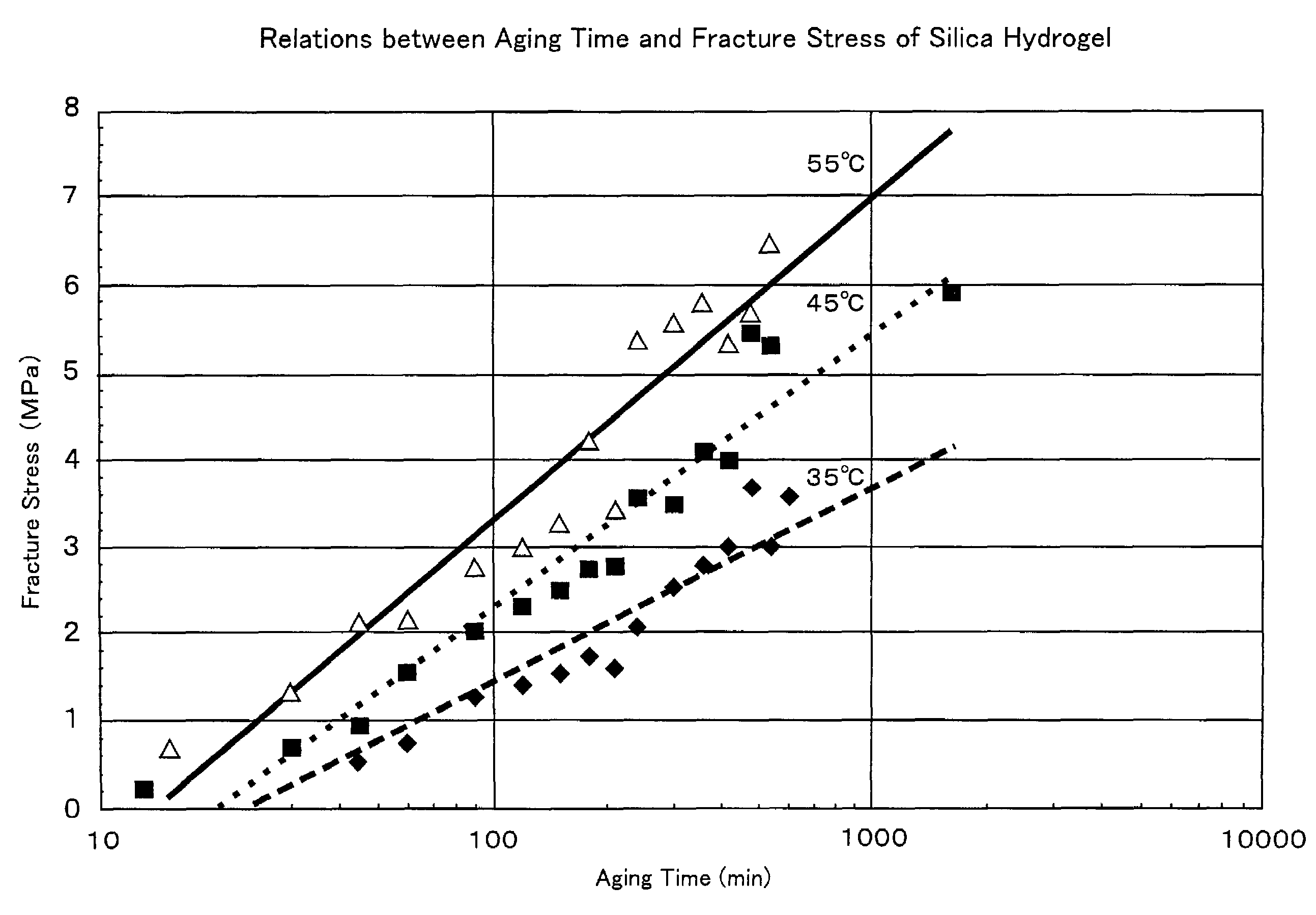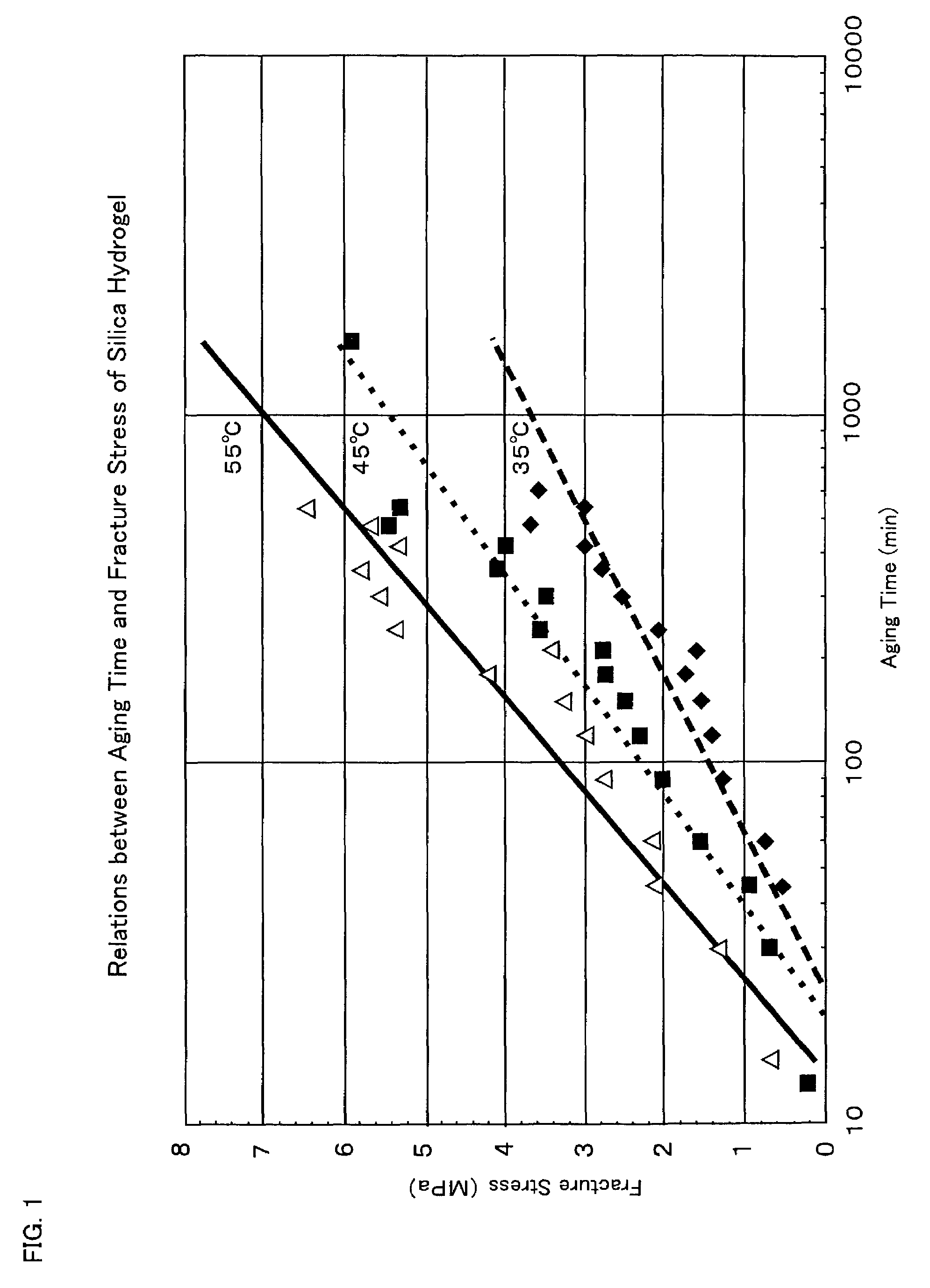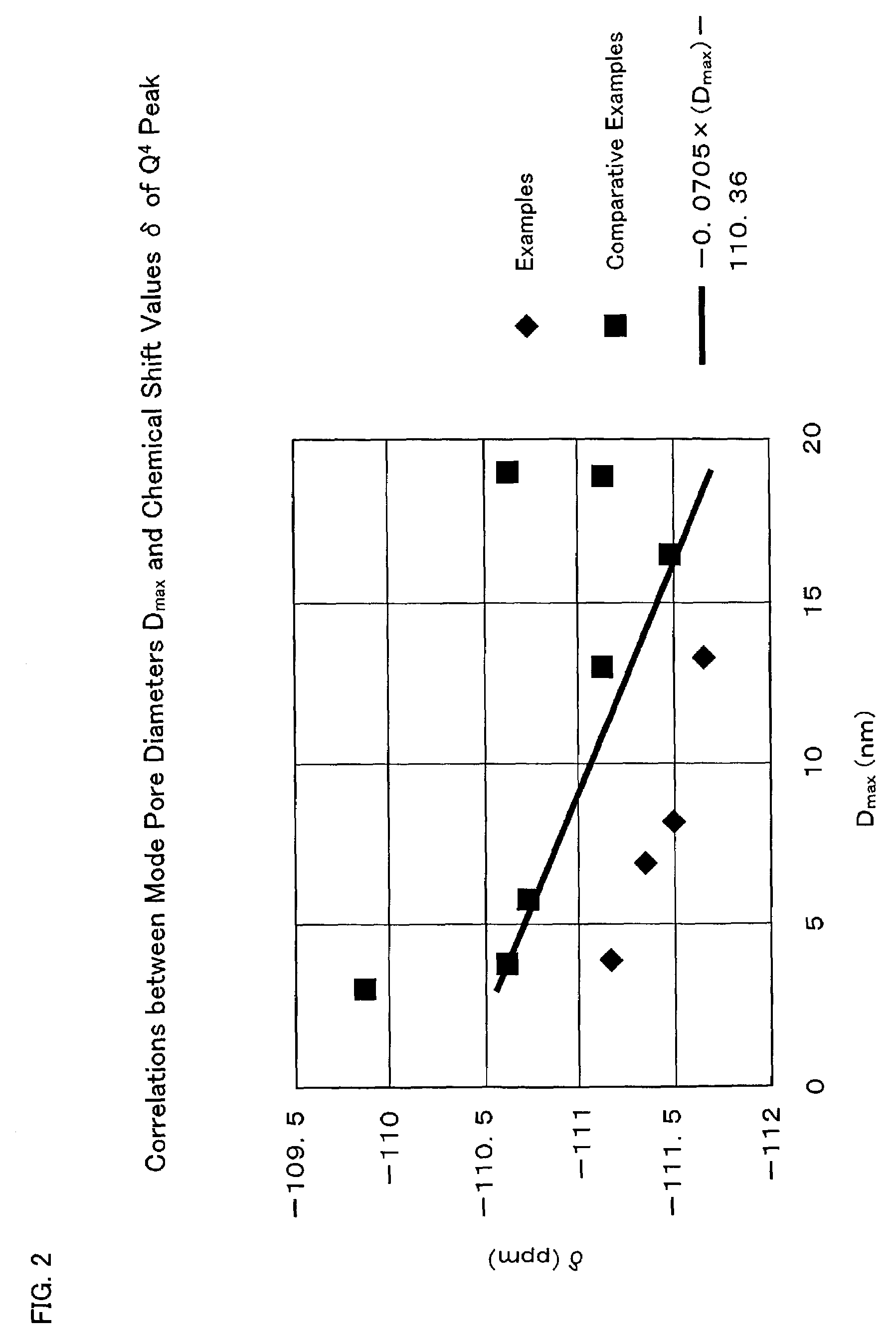Silica
a technology of silica gel and silica gel, applied in the field of new silica, can solve the problems of failure to provide the desired properties of silica gel, the specific surface area of the silica gel, and the failure to improve other properties, etc., to achieve high adsorption and absorption capacity, small mode pore diameter, and high productivity
- Summary
- Abstract
- Description
- Claims
- Application Information
AI Technical Summary
Benefits of technology
Problems solved by technology
Method used
Image
Examples
examples
[0177]The present invention will hereinafter be described in more detail by the following Examples. However, the present invention is not limited to the following Examples unless the gist thereof is overstepped.
[A] Hardness Measurement of Silica Hydrogel:
[0178]A silicon alkoxide was reacted with water of an amount 6 times by mol as much as the alkoxide in a 5-L separable flask, and a reaction mixture was taken out from the flask after the temperature of the reaction mixture reached the boiling point of the alcohol formed through the reaction. A certain amount (about 20 mm in terms of a depth of the liquid) of the reaction mixture taken out was transferred to a 50-cc glass-made screw tube, and the tube was stoppered and held in a water bath substantially controlled at a fixed temperature to measure the breaking strength of this silica hydrogel by means of a digital force gauge (AD-4935 Model, manufactured by A and D Co.) with the passage of aging time. A probe (stainless steel-made r...
examples i-1 to i-3
[0195]A 5-L glass separable flask (jacketed) equipped with a water-cooling condenser opened to the air at the upper part thereof was charged with purified water (1,000 g). While stirring at such a stirring speed that the speed of the edges of stirring blades was 2.5 m / s, tetramethoxysilane (1,400 g) was charged over 3 minutes into the flask. A molar ratio of water to tetramethoxysilane was approximately 6. Hot water of 50° C. was passed through the jacket of the separable flask. The stirring was successively continued and stopped at the time the temperature of the contents reached mixture's the boiling point. Hot water of 50° C. was successively passed through the jacket for about more 0.5 hours to gelate the sol formed. Thereafter, the gel was rapidly taken out of the flask and squeezed through a nylon screen having a mesh opening of 600 μm to be crushed, thereby obtained powdery wet gel (silica hydrogel). This hydrogel (450 g) and purified water (450 g) were charged into a 1-L gla...
example i-4
[0196]Hydrogel was prepared under the same conditions as those for Examples I-1 to I-3. The resultant hydrogel (450 g) and 0.56% aqueous ammonia (450 g) were charged into a 1-L autoclave and subjected to a hydrothermal treatment under the condition at 60° C. for 3 hours. After the hydrothermal treatment was performed for the prescribed period of time, the reaction mixture was filtered through No. 5A filter paper. Without washing with water, the resultant silica was dried completely under reduced pressure at 100° C. to obtain silica according to Examples I-4.
[0197]Various physical properties of the silica obtained in Examples I-1 to I-4 are shown in Tables I-2 and I-4. No peak attributable to crystallinity appeared on the powder X-ray diffraction patterns of all the silica samples, and no peak attributable to periodic structure was observed on the low-angle side (2θ≦5 deg). With respect to the contents of metallic impurities in the silica samples according to Examples I-1 to I-4, sod...
PUM
| Property | Measurement | Unit |
|---|---|---|
| circumferential speed | aaaaa | aaaaa |
| circumferential speed | aaaaa | aaaaa |
| pore diameter | aaaaa | aaaaa |
Abstract
Description
Claims
Application Information
 Login to View More
Login to View More - R&D
- Intellectual Property
- Life Sciences
- Materials
- Tech Scout
- Unparalleled Data Quality
- Higher Quality Content
- 60% Fewer Hallucinations
Browse by: Latest US Patents, China's latest patents, Technical Efficacy Thesaurus, Application Domain, Technology Topic, Popular Technical Reports.
© 2025 PatSnap. All rights reserved.Legal|Privacy policy|Modern Slavery Act Transparency Statement|Sitemap|About US| Contact US: help@patsnap.com



